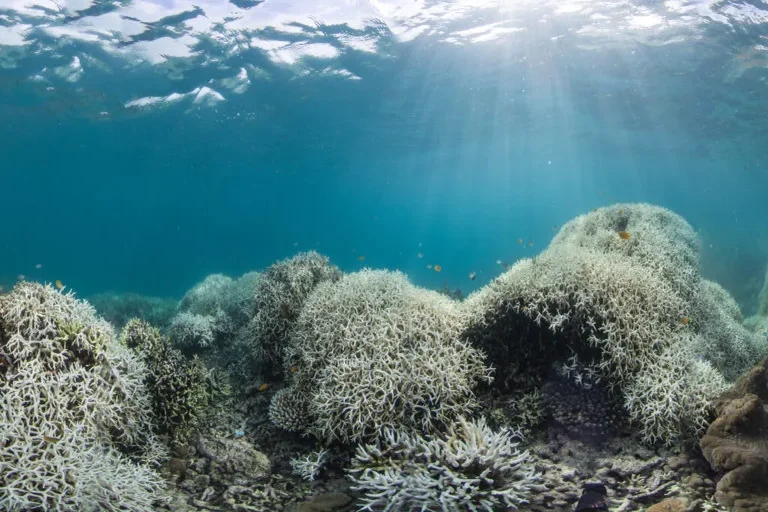
How Marine Heatwave Are Reshaping Ocean Life
The oceans are heating at an alarming rate, and marine heatwaves are reshaping ocean life in unprecedented ways. These extreme temperature spikes—sometimes lasting weeks or even months—are disrupting marine ecosystems, shifting species ranges, collapsing habitats, and affecting human livelihoods. From coral reefs bleaching to kelp forests dying, the impacts of these heatwaves are far-reaching and immediate.
Understanding how marine heatwave are reshaping ocean life is critical for scientists, policymakers, and anyone concerned about the health of our oceans.
What Are Marine Heatwaves?
The oceans are heating up at an alarming rate, and marine heatwaves (MHWs) are becoming more frequent, intense, and prolonged due to climate change, leading to profound shifts in marine ecosystems.
Marine heatwaves (MHWs) are prolonged periods when ocean temperatures rise significantly above the long-term average. Unlike general ocean warming, MHWs are short-term extreme events that stress marine life and disrupt food webs.
Causes:
- Rising global temperatures are due to greenhouse gas emissions.
- Altered ocean currents and wind patterns that trap warm water.
- Stratification in oceans, prevents cooler, nutrient-rich water from mixing with surface layers.
1. Ecosystem Collapse From Kelp to Whales:
The Northeast Pacific experienced the longest recorded MHW from 2014 to 2016. Temperatures were 2–6 °C above historical averages, and the ecological consequences were staggering.
Species Shifts: Approximately 240 species moved poleward, sometimes over 1,000 km beyond their typical range. Notable examples include the sea slug Placida cremoniana and the northern right whale dolphin.
Kelp and Seagrass Decline: Many kelp forests fell, seagrass beds were reduced, and unusual mortality events affected marine mammals, seabirds, and sea stars. The sunflower sea star (Pycnopodia helianthoides), a keystone predator, nearly went extinct.
This event shows how marine heatwaves are reshaping ocean life, affecting both the species themselves and the ecosystems that depend on them.
2. Pacific heatwave unraveled ecosystems:
MHWs destabilize fish populations and weaken ecosystem resilience. Functional groups within kelp forests lose their balance, breaking the link between biodiversity and ecosystem stability. Fish migrations and reduced prey availability disrupt traditional food chains, with ripple effects on predators like seals, seabirds, and whales.
3. Coral Bleaching: A Planet-Wide Crisis:
Between 2023 and 2025, the most severe coral bleaching event in history occurred, affecting 84% of reefs across 82 nations. Australia’s Great Barrier Reef experienced catastrophic bleaching in early 2024:
By April, 80% of colonies were bleached.
By July, almost 44% of the bleached colonies were gone, and some taxa, like Acropora, saw mortality rates up to 95%.
Bleaching events highlight that marine heatwaves are reshaping ocean life not only locally but globally, threatening fisheries, tourism, coastal protection, and reef food chains.
4. Fisheries, Food Chains & Marine Fauna:
When fish stocks decrease or migrate outside of regulated nations, fisheries are severely disrupted:
- The loss of Pacific fish breeding habitat due to a 2013 Gulf of Alaska MHW resulted in the fishing season being canceled, even for the first time in 2020.
- Over the course of several years, the direct losses and ecosystem service costs resulting from a single event amounted to over US$800 million and US$3.1 billion, respectively.
5. Toxic Algal Blooms: A Human-Made Disaster:
In South Australia, a catastrophic bloom of Karenia mikimotoi was caused by a severe MHW that started in September 2024 (sea temperatures ~2.5 °C above average), nutrient runoff, and uncommon upwelling.
- Over a 4,500 km² area, the bloom killed at least 13,800 marine animals from 437 different species.
- Authorities compared the extensive ecosystem collapse to Australia’s Black Summer fires.
- Although the crisis had a significant impact on local communities, tourism, and fisheries, it is still not given enough official recognition.
A Timeline of Impactful Events:
- The Northeast Pacific had a multi-year heatwave from 2014 to 2016 that changed the distribution of species, distorted kelp forests, and caused catastrophic die-offs.
- Global Bleaching in 2023–2025: Impacting approximately 84% of coral reefs globally—a bleaching calamity unlike any other.
- 2024–2025 South Australia Algal Bloom: Thousands of marine animals perished in a toxic bloom caused by a heatwave.
- June 2025: Strong heatwaves affected 20% of the world’s oceans, while record Mediterranean heatwaves affected 62% of the basin.
A Call to Action:
A worldwide emergency that is changing ocean life in right in front of our very eyes, marine heatwaves are more than just a scientific curiosity. Our oceans are clearly in jeopardy, as evidenced by the starving whales and the crumbling kelp forests.
Read More Article>https://www.climatechallange.com/climate-change-oceans-silent-crisis/
FAQS
Q1. How are marine species affected?
Ans. Species may shift ranges, decline in numbers, or die in large-scale events. Coral reefs, kelp forests, and predator populations are particularly vulnerable.
Q2. Are human activities making heatwaves worse?
Ans. Yes. Greenhouse gas emissions, nutrient runoff, and coastal development intensify ocean warming and its impacts.
Q3. How can the impacts be mitigated?
Ans. Monitoring, adaptive management, and stronger conservation strategies help reduce damage.